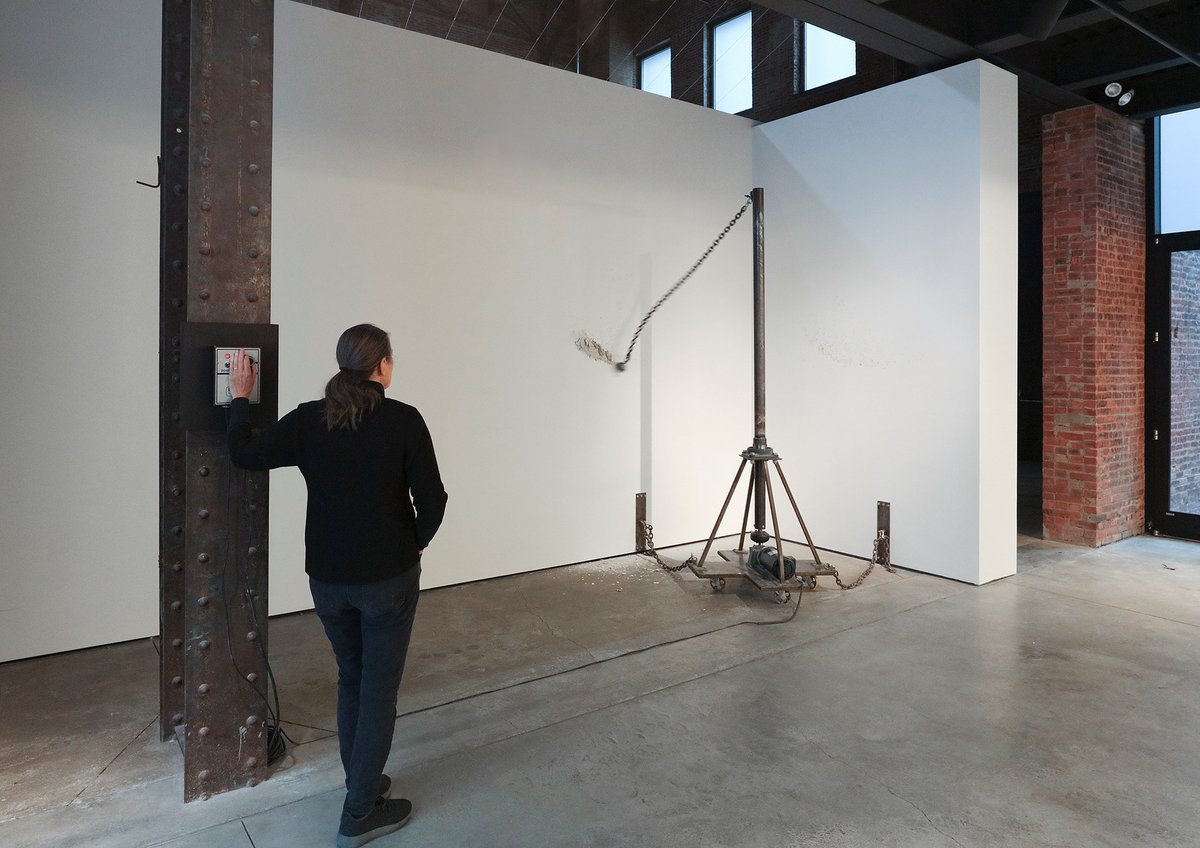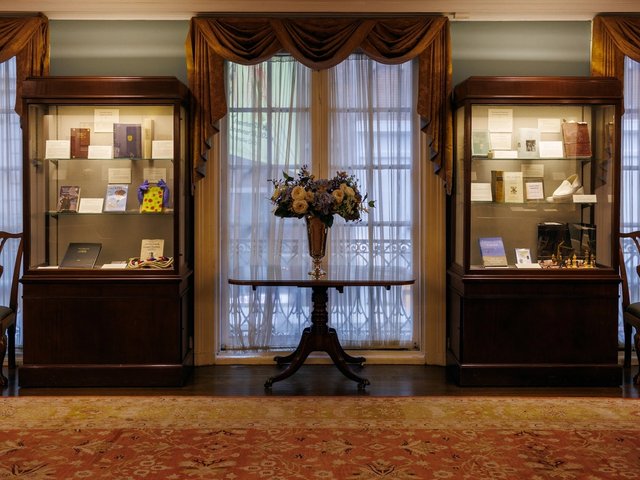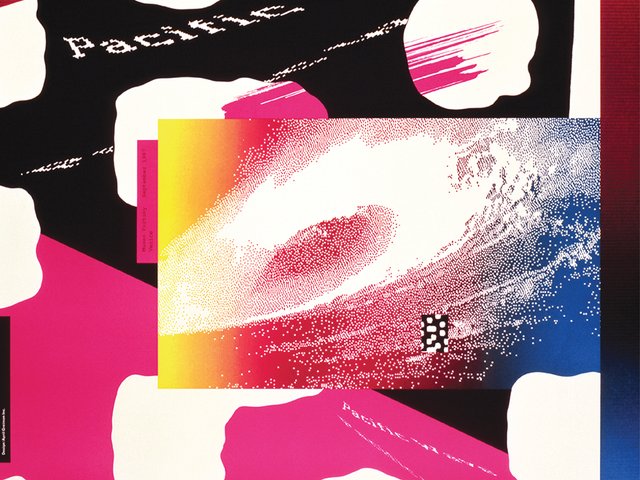The last time Liz Larner’s Corner Basher (1988) was shown in the US, Barack Obama was in the second year of his long and relatively peaceful presidency. Now, as part of a SculptureCenter survey (opening 20 January) that was delayed by the Covid-19 pandemic, the kinetic artwork is bound to read very differently.
It’s a simple machine designed to help you punch walls: a 10ft-tall steel pole on a wheeled base equipped with a steel ball on a chain that at full speed forcefully knocks into walls. It has an on/off switch and a speed dial to be controlled by the viewer. So you have the choice: you can bash the hell out of the wall or stop the violence as you see fit.
“Philosophically it’s about the extension of the body by technology and the freedom and responsibility that comes with that,” says Larner, a Los Angeles-based sculptor whose work across different media often flirts with architecture and issues of visitor engagement. She made this piece in 1988, at a time when a macho aesthetics of destruction was on the rise in Los Angeles and Mark Pauline of Survival Research Laboratories was wreaking havoc in San Francisco with explosive machines—“they weren’t weapons but they were weapon-like”, Larner says.
Corner Basher has been framed as a feminist response to this spectacle of destruction because it hands the controls to the viewer. But it also has its own aggressive pleasures, “persistent and joyful in its desire to take down the wall as we know it”, Connie Butler writes in her essay for the SculptureCenter catalogue.
As for what will actually happen to the museum walls over the course of the exhibition, aptly titled Don’t put it back like it was, Larner says it’s hard to predict. “Some people roll their eyes when I say this, but this is a subtractive sculpture made by a group of people who don’t know each other with an instrument they’re using,” she says.
In this spirit, she’s interested in letting the chips fall where they may. “Unless they start to clog the motor,” she says, “we will leave the pieces of the wall where they land. And a lot of it is just dust.”
- Liz Larner: Don’t put it back like it was, 20 January-28 March, SculptureCenter, Queens, New York





